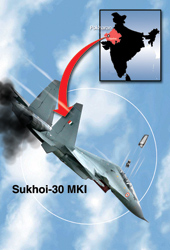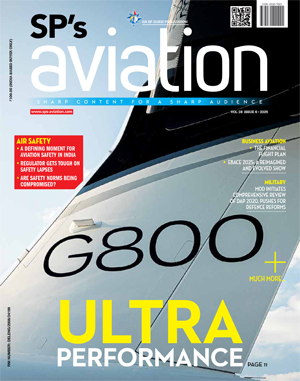INDIAN ARMED FORCES CHIEFS ON OUR RELENTLESS AND FOCUSED PUBLISHING EFFORTS

The insightful articles, inspiring narrations and analytical perspectives presented by the Editorial Team, establish an alluring connect with the reader. My compliments and best wishes to SP Guide Publications.

"Over the past 60 years, the growth of SP Guide Publications has mirrored the rising stature of Indian Navy. Its well-researched and informative magazines on Defence and Aerospace sector have served to shape an educated opinion of our military personnel, policy makers and the public alike. I wish SP's Publication team continued success, fair winds and following seas in all future endeavour!"

Since, its inception in 1964, SP Guide Publications has consistently demonstrated commitment to high-quality journalism in the aerospace and defence sectors, earning a well-deserved reputation as Asia's largest media house in this domain. I wish SP Guide Publications continued success in its pursuit of excellence.
- Prime Minister Modi Visits Punjab’s Adampur Air Base, Interacts with Airmen after Successful ‘Operation Sindoor’; Stern Message to Pakistan
- The layered Air Defence systems that worked superbly, the key element of Operation Sindoor
- Operation Sindoor | Day 2 DGMOs Briefing
- Operation Sindoor: Resolute yet Restrained
- India's Operation Sindoor Sends a Clear Message to Terror and the World – ‘ZERO TOLERANCE’
- Japan and India set forth a defence cooperation consultancy framework, talks on tank and jet engines
Another IAF Sukhoi Crashes in the Desert

After an unblemished record of 100% flight safety for 12 consecutive years since induction, why it is the Indian Air Force (IAF) has lost its second state-of-the-art, Su-30 MKI aircraft within a span of seven months this year? The first accident took place on April 30, 70 km south-east of Jaisalmer while returning from a training mission at the nearby Pokharan live armament firing ranges. The IAF did not publicly reveal the exact cause of the accident but it appeared to have been attributed to a flaw in the design that led to inadvertent and incorrect operation of the switches by one of the pilots. This resulted in a level-3 FBW (Fly-By-Wire) failure which made the aircraft go through a series of uncontrolled manoeuvres with no other recourse available to the crew except escape through ejection. While the aircraft was totally destroyed, tragically, one of the pilots also suffered fatal injuries during the process of ejection.
The second crash occurred on November 30, precisely seven months later, once again in the vicinity of Pokharan. While the precise cause of the accident is under investigation by a ‘Court of Inquiry’ already constituted by the IAF, the Force, at the same time, has temporarily grounded the entire fleet of approximately 105 aircraft to carry out precautionary checks before clearing them for flight. It appears that in the recent episode, the pilots ejected when the warning lights indicated fire on both engines simultaneously - a very rare phenomenon indeed. The big question is - was it actually a case of the engines being actually on fire or was it owing to false fire alarms. What can cause an actual fire in jet engines? Probable causes are generally attributed to either engine surge or fuel/hot gas leak. On the other hand, false alarms can be caused, because of imperfect design, poor cabling or mal-function of fire detectors, especially under certain weather conditions. There have been many such cases in the past, a large proportion of which are known to have occurred on Russian engines. The author has himself experienced this phenomenon on three different occasions while flying the MiG-23BN/MF aircraft.
Generally, there are other related indications in the cockpit to confirm engine fire such as high ‘jpt’ (jet pipe temperature), etc. The fire can also be confirmed through visual observations such as from the ground by trained personnel or by throwing in a turn/looking through the rear-view mirror. But, it must be remembered that in case of an actual fire, there is very little time available for action due to a high probability of explosion and disintegration with probable dire consequences for the aircrew. Quick thinking and correct diagnosis of the situation only can make the difference between survival of the aircrew (in case of an actual fire) and safe recovery of an aircraft (in case of a false alarm).
The IAF would no doubt find the right answer and that too pretty soon, which include quality control concerns about HAL assembled aircraft, especially in the area of wire looms. In the meantime, temporary grounding of the fleet does not mean that the national security has been compromised, as brought out by some sections of the press. There are other assets available to the IAF, to take on the peace-time air defence tasks.





